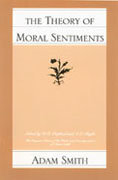Question
The following is an estimate of Zambia's market demand curve for lamb. It has been estimated (using a computer regression package) from actual monthly data
The following is an estimate of Zambia's market demand curve for lamb. It has been estimated (using a computer regression package) from actual monthly data for the years 1966-99.
Qd = 217.1 - 0.112PL + 0.125PB - 0.0198Y
where: Qd is the quantity of lamb sold in grams per person per week.
PL is the price of lamb (in Kwacha per kg, at 1985 prices).
PB is the price of beef (in Kwacha per kg, at 1985 prices).
Y is annual personal disposable income per head (K, at 1995 prices).
From this, economists could forecast what would happen to the demand for lamb if any of three variables- the price of lamb, the price of beef or income - changed.
There is a serious problem with estimated demand functions like these: they assume that other determinants of demand have not changed. In the case of this demand-for-lamb function, one of the other determinants did change. This was tastes - during the 1980s and 1990s there was a shift in demand away from lamb and other meats, partly for health reasons, and partly because of an expansion in the availability of and demand for vegetarian and low-meat alternatives. Assuming that this shift in taste took place steadily over time, a new demand equation was estimated for the same years:
Qd = 192.3 0.530PL + 0.0738PB + 0.0261Y 7.352TIME
where the TIME term is as follows: 1966 = 1, 1967 = 2, 1968 = 3 . . . 1999 = 34.
i). Explain how the introduction of the TIME term affects the relationship between the demand for lamb and the price of beef and the relationship the relationship between the demand for lamb and personal disposable income per head? (10marks)
Then in the mid-1990s, there was the Bovine disease scare and a temporary shift in demand to lamb from beef.
The following table shows this shift.
Years Actual Actual PL PB Y
consumptionof lamb Consumption of beef
1994 54 131 301.6 343 8266
1996 66 101 296.2 325.6 8607
2000 55 124 310 320.1 9604
ii.) Use the second equation to estimate the demand for lamb in 1994, 1996 and 2000. In which of these three years was the estimation closest to the actual figure? Explain the divergences in the actual figures from the figures derived from the equation. (10marks)
Step by Step Solution
There are 3 Steps involved in it
Step: 1

Get Instant Access to Expert-Tailored Solutions
See step-by-step solutions with expert insights and AI powered tools for academic success
Step: 2

Step: 3

Ace Your Homework with AI
Get the answers you need in no time with our AI-driven, step-by-step assistance
Get Started


